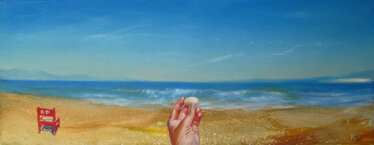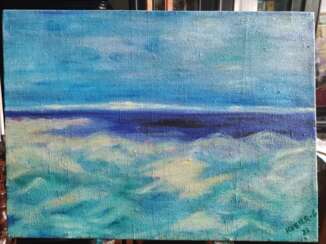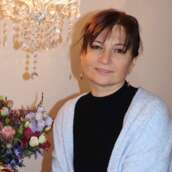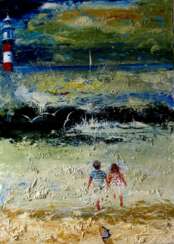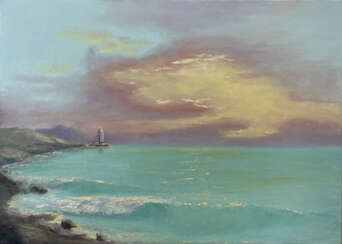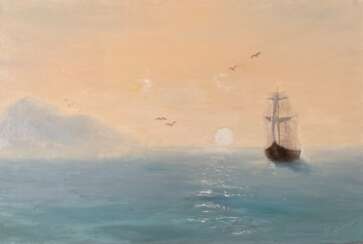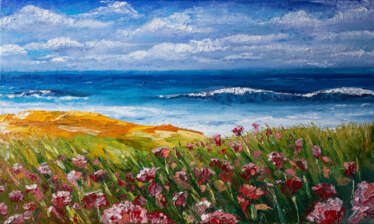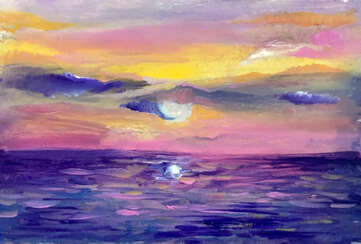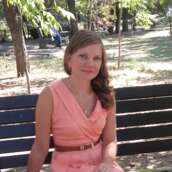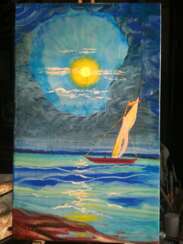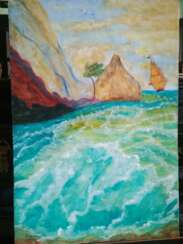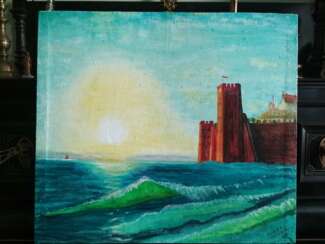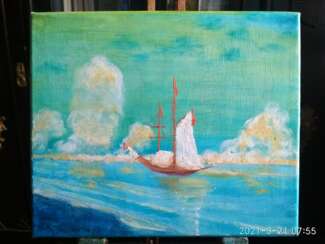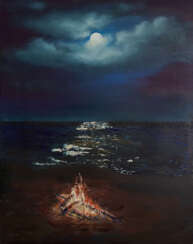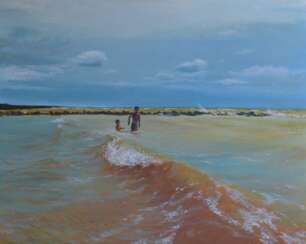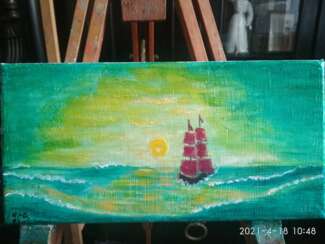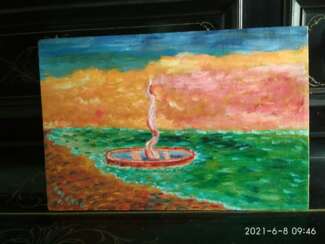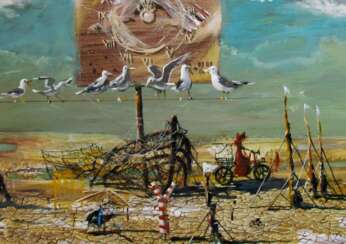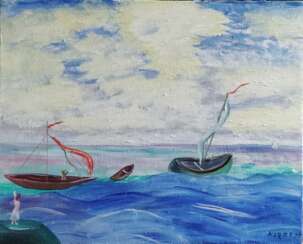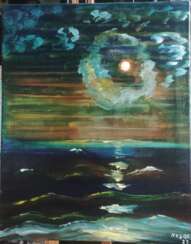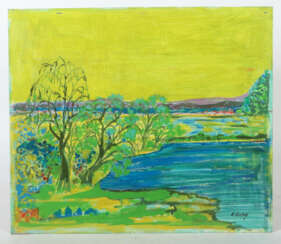16828 Items by auctions and galleries:
see
Memories of the sea.
Sergiy Roy (b. 1958) 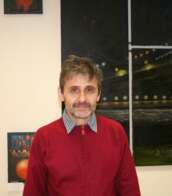 Shop Roy Sergiy
Shop Roy Sergiy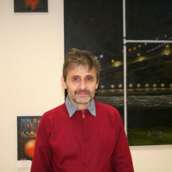

Sergiy Roy
04.04.1958
Ukraine
EXHIBITIONS:
INTERNATIONAL ART EXHIBITION,
MOSKOW, RUSSIA, WARSAW, POLAND, 1984
BASHKIRTSEV’S ART EXHIBITION, MUSEUM OF FINE ART, POLTAVA, UKRAINE, 1988
AVAN/ART IN ROVANIEMI, FINLAND, 1990
ANNUAL NATIONAL ART EXHIBITION, KYIV, UKRAINE, 1990
AVAN/ART, MUSEUM OF FINE ART, MURMANSK, RUSSIA, 1990
AVAN/ART IN JACKSONVILLE, KENT GALLERY, JACKSONVILLE, FLORIDA, USA, 1991
AVAN/ART IN JACKSONVILLE, DAWNTOWN GALLERY, JACKSONVILLE, FLORIDA, USA, 1991
ME+ME+ME+ME+…/AVAN CENTER OF CULTURE MURMANSK, RUSSIA, 1992
NATIONAL EXHIBITION ART GALLERY, KIYV, UKRAINE, 1993
PAN-UKRAINE, DNIPROPETROVSK, UKRAINE, 1995
EXHIBITION MODERN ART GALLERY, POLTAVA, UKRAINE, 2003
REGIONAL EXHIBITION MODERN ART GALLERY, POLTAVA, UKRAINE, 2005
REGIONAL EXHIBITION MODERN ART GALLERY, POLTAVA, UKRAINE, 2007
KYIV-ART. 2008 HOUSE OF TEACHER ,KYIV , UKRAINE 2008
M-ART GALLERY KHARKIV, UKRAINE 2010
IN GARDENS OF VICTORY GALLERY , ODESSA, UKRAINE 2011
Florence Design Week "Crossing People" Exhibition,FLORENCE,ITALY,2013
Gallery Fine ART, POLTAVA,UKRAINE,2013
Gallery " TRYPTYH", KYIV,UKRAINE,2014
Fine ART Gallery ,POLTAVA,UKRAINE,2014
Ukrainian Free Universety, MUNKHEN,GERMANY,2014-2015
ARTGESCHOSS, internationale kunstausstellung, Salzgitter Bad,GERMANY,2017
Art Revolution Taipei,Taiwan , 台北新藝術博覽會,2018
Private collections:
Mr. Roman Kupchinsky (USA, New York)
Dr. Ulf Bethmann (Germany, Hamburg)
Ms. Monika Platek (Poland, Krakov)
Museums and collection:
Jacksonville College (Florida, USA);
Khmelnitsckiy National Art Museum (Ukraine);
Poltava Art Museum (Ukraine);
Modern Art Gallery Poltava (Ukraine);
Austria, Australia, Dubai, USA, Germany, England, Russia, Israel, Irland, New Seland, Taiwan, Ukraine,Poland.

Artist shop
Roy Sergiy
Ukraine
Number of products: 209
Море перед грозой. Sea
Elena Kozar-Gurina (b. 1969)  Shop Kozar-Gurina Elena
Shop Kozar-Gurina Elena
Elena Kozar-Gurina
17.03.1969
Ukraine
Я по професии врач, люблю искусство, пишу свои авторские картины маслом. Любовь к искусству развила в себе во время учебы в мединституте в Санкт-Петербурге, где я одновременно училась три года искусствоведению при Государственном Эрмитаже. В своих картинах я передаю радость жизни, счастье, надежду на лучшее.I am a doctor. I love art. I paint my paintings in oil. I developed a love of art while studying at the medical institute in St. Petersburg where I simultaneously studied art for three years at the State Hermitage Museum. In my paintings I convey the joy of life, happiness, hope for the best.
Artist shop
Kozar-Gurina Elena
Ukraine
Number of products: 255
Two and the sea .
Sergiy Roy (b. 1958)  Shop Roy Sergiy
Shop Roy Sergiy

Sergiy Roy
04.04.1958
Ukraine
EXHIBITIONS:
INTERNATIONAL ART EXHIBITION,
MOSKOW, RUSSIA, WARSAW, POLAND, 1984
BASHKIRTSEV’S ART EXHIBITION, MUSEUM OF FINE ART, POLTAVA, UKRAINE, 1988
AVAN/ART IN ROVANIEMI, FINLAND, 1990
ANNUAL NATIONAL ART EXHIBITION, KYIV, UKRAINE, 1990
AVAN/ART, MUSEUM OF FINE ART, MURMANSK, RUSSIA, 1990
AVAN/ART IN JACKSONVILLE, KENT GALLERY, JACKSONVILLE, FLORIDA, USA, 1991
AVAN/ART IN JACKSONVILLE, DAWNTOWN GALLERY, JACKSONVILLE, FLORIDA, USA, 1991
ME+ME+ME+ME+…/AVAN CENTER OF CULTURE MURMANSK, RUSSIA, 1992
NATIONAL EXHIBITION ART GALLERY, KIYV, UKRAINE, 1993
PAN-UKRAINE, DNIPROPETROVSK, UKRAINE, 1995
EXHIBITION MODERN ART GALLERY, POLTAVA, UKRAINE, 2003
REGIONAL EXHIBITION MODERN ART GALLERY, POLTAVA, UKRAINE, 2005
REGIONAL EXHIBITION MODERN ART GALLERY, POLTAVA, UKRAINE, 2007
KYIV-ART. 2008 HOUSE OF TEACHER ,KYIV , UKRAINE 2008
M-ART GALLERY KHARKIV, UKRAINE 2010
IN GARDENS OF VICTORY GALLERY , ODESSA, UKRAINE 2011
Florence Design Week "Crossing People" Exhibition,FLORENCE,ITALY,2013
Gallery Fine ART, POLTAVA,UKRAINE,2013
Gallery " TRYPTYH", KYIV,UKRAINE,2014
Fine ART Gallery ,POLTAVA,UKRAINE,2014
Ukrainian Free Universety, MUNKHEN,GERMANY,2014-2015
ARTGESCHOSS, internationale kunstausstellung, Salzgitter Bad,GERMANY,2017
Art Revolution Taipei,Taiwan , 台北新藝術博覽會,2018
Private collections:
Mr. Roman Kupchinsky (USA, New York)
Dr. Ulf Bethmann (Germany, Hamburg)
Ms. Monika Platek (Poland, Krakov)
Museums and collection:
Jacksonville College (Florida, USA);
Khmelnitsckiy National Art Museum (Ukraine);
Poltava Art Museum (Ukraine);
Modern Art Gallery Poltava (Ukraine);
Austria, Australia, Dubai, USA, Germany, England, Russia, Israel, Irland, New Seland, Taiwan, Ukraine,Poland.

Artist shop
Roy Sergiy
Ukraine
Number of products: 209
"Sunset by the sea"
Tatiana Lapina (b. 1986)  Shop Lapina Tatiana
Shop Lapina Tatiana

Tatiana Lapina
23.05.1986
Russia
Artist Lapina Tatiana Alexandrovna was born in Kamensk - Uralsky, Sverdlovsk region, Russia. Since childhood, I learned to draw on my own, since studying at an art school was expensive for my parents, I received a musical education that instilled in me a love of classical music. Continuing to paint her paintings in watercolor, she went to study in Moscow. After studying at the Moscow Academic Art School in 2011, I paint Oil Paintings. Now I work as an Artist, I paint Paintings to Order, compose music and raise three children: Konstantin, Elizabeth and Eugene. I will be happy to give a part of myself, passing on my tenderness, harmony and kindness.
Художник Лапина Татьяна Александровна родилась в городе Каменске - Уральском, Свердловской области, Россия.
С детства училась рисовать самостоятельно, поскольку обучение в художественной школе для моих родителей было накладно, я получила музыкальное образование, которое привило мне любовь к классической музыке. Продолжая писать свои картины акварелью, поехала учиться в Москву. После обучения в Московском Академическом Художественном Училище в 2011 году пишу Картины Маслом. Сейчас я работаю Художником, пишу Картины на Заказ, сочиняю музыку и воспитываю троих детей: Константина, Елизавету и Евгения. Буду счастлива подарить часть себя, передавая свою нежность, гармонию и доброту.

Artist shop
Lapina Tatiana
Russia
Number of products: 55
"Dawn by the sea"
Tatiana Lapina (b. 1986)  Shop Lapina Tatiana
Shop Lapina Tatiana

Tatiana Lapina
23.05.1986
Russia
Artist Lapina Tatiana Alexandrovna was born in Kamensk - Uralsky, Sverdlovsk region, Russia. Since childhood, I learned to draw on my own, since studying at an art school was expensive for my parents, I received a musical education that instilled in me a love of classical music. Continuing to paint her paintings in watercolor, she went to study in Moscow. After studying at the Moscow Academic Art School in 2011, I paint Oil Paintings. Now I work as an Artist, I paint Paintings to Order, compose music and raise three children: Konstantin, Elizabeth and Eugene. I will be happy to give a part of myself, passing on my tenderness, harmony and kindness.
Художник Лапина Татьяна Александровна родилась в городе Каменске - Уральском, Свердловской области, Россия.
С детства училась рисовать самостоятельно, поскольку обучение в художественной школе для моих родителей было накладно, я получила музыкальное образование, которое привило мне любовь к классической музыке. Продолжая писать свои картины акварелью, поехала учиться в Москву. После обучения в Московском Академическом Художественном Училище в 2011 году пишу Картины Маслом. Сейчас я работаю Художником, пишу Картины на Заказ, сочиняю музыку и воспитываю троих детей: Константина, Елизавету и Евгения. Буду счастлива подарить часть себя, передавая свою нежность, гармонию и доброту.

Artist shop
Lapina Tatiana
Russia
Number of products: 55
Sky, sea and flowers
Ekaterina Zhuchenko RedHeadKat (b. 1979) 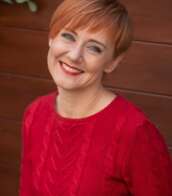 Shop Zhuchenko RedHeadKat Ekaterina
Shop Zhuchenko RedHeadKat Ekaterina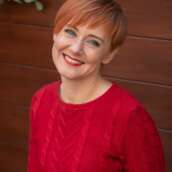

Ekaterina Zhuchenko RedHeadKat
12.08.1979
Byelorussia
EN/RU
.
My name is Ekaterina Zhuchenko, creative pseudonym RedHeadKat.
I have been an artist from an early age. Dad's sketchbook was the greatest treasure. Then I had not dreamed of writing yet
oil. A large set of watercolors in a white plastic box was often secretly taken from the shelf for my
naive art. The thick squirrel brush gave an unforgettable tactile sensation.
But I was able to forget about it "becoming an adult".
I am grateful to the people who helped me return everything. At some point, I realized that I couldn’t stop it. The same set of watercolors, already replenished with new shades. It
became my frequent joy. And oil painting is my discovery and a way to restore connection with my family and father.
.
1996-1999: Minsk Technological College. Fashion designer with a course in painting and acaemic drawing, in-depth study of fashion illustration
2020 to the present day: studying painting in the Graphics studio, Minsk
2021 course of painting with a palette knife at the St. Petersburg School of Oil Painting
Меня зовут Жученко Екатерина, творческий псевдоним RedHeadKat
Я была художником с малых лет. Папин этюдник был самой большой сокровищницей, хоть я тогда и не мечтала писать маслом. Большой набор акварельных красок в белой пласт-
ковой коробке часто в тайне был взят с полки для моего наивного детского искусства, а толстая кисть-белка дарила незабываемые тактильные ощущения.
Но я смогла забыть об этом "став взрослой".
Я благодарна людям, которые помогли мне всё вернуть. В какой-то момент я поняла, что не писть я уже не смогу. Тот самый набор акварели, уже пополненный новыми оттенками, стал моей частой радостью. А живопись маслом — моим способом восстановления связи с родом и отцом.
.
.
.

Artist shop
Zhuchenko RedHeadKat Ekaterina
Byelorussia
Number of products: 21
Home by the sea.
Sergiy Roy (b. 1958)  Shop Roy Sergiy
Shop Roy Sergiy

Sergiy Roy
04.04.1958
Ukraine
EXHIBITIONS:
INTERNATIONAL ART EXHIBITION,
MOSKOW, RUSSIA, WARSAW, POLAND, 1984
BASHKIRTSEV’S ART EXHIBITION, MUSEUM OF FINE ART, POLTAVA, UKRAINE, 1988
AVAN/ART IN ROVANIEMI, FINLAND, 1990
ANNUAL NATIONAL ART EXHIBITION, KYIV, UKRAINE, 1990
AVAN/ART, MUSEUM OF FINE ART, MURMANSK, RUSSIA, 1990
AVAN/ART IN JACKSONVILLE, KENT GALLERY, JACKSONVILLE, FLORIDA, USA, 1991
AVAN/ART IN JACKSONVILLE, DAWNTOWN GALLERY, JACKSONVILLE, FLORIDA, USA, 1991
ME+ME+ME+ME+…/AVAN CENTER OF CULTURE MURMANSK, RUSSIA, 1992
NATIONAL EXHIBITION ART GALLERY, KIYV, UKRAINE, 1993
PAN-UKRAINE, DNIPROPETROVSK, UKRAINE, 1995
EXHIBITION MODERN ART GALLERY, POLTAVA, UKRAINE, 2003
REGIONAL EXHIBITION MODERN ART GALLERY, POLTAVA, UKRAINE, 2005
REGIONAL EXHIBITION MODERN ART GALLERY, POLTAVA, UKRAINE, 2007
KYIV-ART. 2008 HOUSE OF TEACHER ,KYIV , UKRAINE 2008
M-ART GALLERY KHARKIV, UKRAINE 2010
IN GARDENS OF VICTORY GALLERY , ODESSA, UKRAINE 2011
Florence Design Week "Crossing People" Exhibition,FLORENCE,ITALY,2013
Gallery Fine ART, POLTAVA,UKRAINE,2013
Gallery " TRYPTYH", KYIV,UKRAINE,2014
Fine ART Gallery ,POLTAVA,UKRAINE,2014
Ukrainian Free Universety, MUNKHEN,GERMANY,2014-2015
ARTGESCHOSS, internationale kunstausstellung, Salzgitter Bad,GERMANY,2017
Art Revolution Taipei,Taiwan , 台北新藝術博覽會,2018
Private collections:
Mr. Roman Kupchinsky (USA, New York)
Dr. Ulf Bethmann (Germany, Hamburg)
Ms. Monika Platek (Poland, Krakov)
Museums and collection:
Jacksonville College (Florida, USA);
Khmelnitsckiy National Art Museum (Ukraine);
Poltava Art Museum (Ukraine);
Modern Art Gallery Poltava (Ukraine);
Austria, Australia, Dubai, USA, Germany, England, Russia, Israel, Irland, New Seland, Taiwan, Ukraine,Poland.

Artist shop
Roy Sergiy
Ukraine
Number of products: 209
Море. Возле причала. Sea. Near the pier.
Elena Kozar-Gurina (b. 1969)  Shop Kozar-Gurina Elena
Shop Kozar-Gurina Elena
Elena Kozar-Gurina
17.03.1969
Ukraine
Я по професии врач, люблю искусство, пишу свои авторские картины маслом. Любовь к искусству развила в себе во время учебы в мединституте в Санкт-Петербурге, где я одновременно училась три года искусствоведению при Государственном Эрмитаже. В своих картинах я передаю радость жизни, счастье, надежду на лучшее.I am a doctor. I love art. I paint my paintings in oil. I developed a love of art while studying at the medical institute in St. Petersburg where I simultaneously studied art for three years at the State Hermitage Museum. In my paintings I convey the joy of life, happiness, hope for the best.
Artist shop
Kozar-Gurina Elena
Ukraine
Number of products: 255
Ночь на море. Night at sea.
Elena Kozar-Gurina (b. 1969)  Shop Kozar-Gurina Elena
Shop Kozar-Gurina Elena
Elena Kozar-Gurina
17.03.1969
Ukraine
Я по професии врач, люблю искусство, пишу свои авторские картины маслом. Любовь к искусству развила в себе во время учебы в мединституте в Санкт-Петербурге, где я одновременно училась три года искусствоведению при Государственном Эрмитаже. В своих картинах я передаю радость жизни, счастье, надежду на лучшее.I am a doctor. I love art. I paint my paintings in oil. I developed a love of art while studying at the medical institute in St. Petersburg where I simultaneously studied art for three years at the State Hermitage Museum. In my paintings I convey the joy of life, happiness, hope for the best.
Artist shop
Kozar-Gurina Elena
Ukraine
Number of products: 255
Море. Марина. Sea. Marina.
Elena Kozar-Gurina (b. 1969)  Shop Kozar-Gurina Elena
Shop Kozar-Gurina Elena
Elena Kozar-Gurina
17.03.1969
Ukraine
Я по професии врач, люблю искусство, пишу свои авторские картины маслом. Любовь к искусству развила в себе во время учебы в мединституте в Санкт-Петербурге, где я одновременно училась три года искусствоведению при Государственном Эрмитаже. В своих картинах я передаю радость жизни, счастье, надежду на лучшее.I am a doctor. I love art. I paint my paintings in oil. I developed a love of art while studying at the medical institute in St. Petersburg where I simultaneously studied art for three years at the State Hermitage Museum. In my paintings I convey the joy of life, happiness, hope for the best.
Artist shop
Kozar-Gurina Elena
Ukraine
Number of products: 255
Крепость на море. Fortress by the sea.
Elena Kozar-Gurina (b. 1969)  Shop Kozar-Gurina Elena
Shop Kozar-Gurina Elena
Elena Kozar-Gurina
17.03.1969
Ukraine
Я по професии врач, люблю искусство, пишу свои авторские картины маслом. Любовь к искусству развила в себе во время учебы в мединституте в Санкт-Петербурге, где я одновременно училась три года искусствоведению при Государственном Эрмитаже. В своих картинах я передаю радость жизни, счастье, надежду на лучшее.I am a doctor. I love art. I paint my paintings in oil. I developed a love of art while studying at the medical institute in St. Petersburg where I simultaneously studied art for three years at the State Hermitage Museum. In my paintings I convey the joy of life, happiness, hope for the best.
Artist shop
Kozar-Gurina Elena
Ukraine
Number of products: 255
Memories of the sea
Veronika Shepilova (b. 1996)  Shop Shepilova Veronika
Shop Shepilova Veronika

Veronika Shepilova
17.10.1996
Russia
All my life I wanted to create art! I have art education as animation and computer graphics artist.
I love to draw everything: nature, people, emotions and impressions. Watercolor is my favorite technique. Now I am 24 y.o. and I want to share my collection of art with the world . All of my art contains a piece of my soul.

Artist shop
Shepilova Veronika
Russia
Number of products: 2
Девочка у моря. Girl by the sea.
Elena Bolender (b. 1970)  Shop Bolender Elena
Shop Bolender Elena

Elena Bolender
03.11.1970
Russia
Меня зовут Болендер Елена, я пишу картины с 2014 года, в 2020 включена в Единый Реестр Профессиональных художников России, с присвоенной категорией 5В - сложившийся профессиональный художник (востребованный).
За это период участвовала в 9 выставках, 5 из которых были персональные, мои работы, на постоянной основе, размещены в местном музее, станица Динская , Краснодарского края.
Пишу, в основном, в стиле импрессионизм, имею собственную технику - мозаика. Люблю писать портреты и пейзажи.

Artist shop
Bolender Elena
Russia
Number of products: 51
Море. Восход. Корабли. Sea.
Elena Kozar-Gurina (b. 1969)  Shop Kozar-Gurina Elena
Shop Kozar-Gurina Elena
Elena Kozar-Gurina
17.03.1969
Ukraine
Я по професии врач, люблю искусство, пишу свои авторские картины маслом. Любовь к искусству развила в себе во время учебы в мединституте в Санкт-Петербурге, где я одновременно училась три года искусствоведению при Государственном Эрмитаже. В своих картинах я передаю радость жизни, счастье, надежду на лучшее.I am a doctor. I love art. I paint my paintings in oil. I developed a love of art while studying at the medical institute in St. Petersburg where I simultaneously studied art for three years at the State Hermitage Museum. In my paintings I convey the joy of life, happiness, hope for the best.
Artist shop
Kozar-Gurina Elena
Ukraine
Number of products: 255
Утро на море. Morning at the sea.
Elena Kozar-Gurina (b. 1969)  Shop Kozar-Gurina Elena
Shop Kozar-Gurina Elena
Elena Kozar-Gurina
17.03.1969
Ukraine
Я по професии врач, люблю искусство, пишу свои авторские картины маслом. Любовь к искусству развила в себе во время учебы в мединституте в Санкт-Петербурге, где я одновременно училась три года искусствоведению при Государственном Эрмитаже. В своих картинах я передаю радость жизни, счастье, надежду на лучшее.I am a doctor. I love art. I paint my paintings in oil. I developed a love of art while studying at the medical institute in St. Petersburg where I simultaneously studied art for three years at the State Hermitage Museum. In my paintings I convey the joy of life, happiness, hope for the best.
Artist shop
Kozar-Gurina Elena
Ukraine
Number of products: 255
"Night by the sea"
Tatiana Lapina (b. 1986)  Shop Lapina Tatiana
Shop Lapina Tatiana

Tatiana Lapina
23.05.1986
Russia
Artist Lapina Tatiana Alexandrovna was born in Kamensk - Uralsky, Sverdlovsk region, Russia. Since childhood, I learned to draw on my own, since studying at an art school was expensive for my parents, I received a musical education that instilled in me a love of classical music. Continuing to paint her paintings in watercolor, she went to study in Moscow. After studying at the Moscow Academic Art School in 2011, I paint Oil Paintings. Now I work as an Artist, I paint Paintings to Order, compose music and raise three children: Konstantin, Elizabeth and Eugene. I will be happy to give a part of myself, passing on my tenderness, harmony and kindness.
Художник Лапина Татьяна Александровна родилась в городе Каменске - Уральском, Свердловской области, Россия.
С детства училась рисовать самостоятельно, поскольку обучение в художественной школе для моих родителей было накладно, я получила музыкальное образование, которое привило мне любовь к классической музыке. Продолжая писать свои картины акварелью, поехала учиться в Москву. После обучения в Московском Академическом Художественном Училище в 2011 году пишу Картины Маслом. Сейчас я работаю Художником, пишу Картины на Заказ, сочиняю музыку и воспитываю троих детей: Константина, Елизавету и Евгения. Буду счастлива подарить часть себя, передавая свою нежность, гармонию и доброту.

Artist shop
Lapina Tatiana
Russia
Number of products: 55
Azov Sea
Ivan Ormanzhi (b. 1976)  Shop Ormanzhi Ivan
Shop Ormanzhi Ivan

Ivan Ormanzhi
12.03.1976
Ukraine
I'm not professional artist, because I ern money by another profession. I'm a web developer from Ukraine, but painting time after time all of my life. For fun, for my games and for my web sites. I'm happy when I paint and I see that many people like my artworks. It's a good reason not to stop.
I didn't graduate any Art School... Yes, It's not a reason to pride, but in our time, with the Internet we can study everything at home. It doesn't matter what do you do... but it matters that you do it with love.

Artist shop
Ormanzhi Ivan
Ukraine
Number of products: 32
Море. Ночь. Sea. Night.
Elena Kozar-Gurina (b. 1969)  Shop Kozar-Gurina Elena
Shop Kozar-Gurina Elena
Elena Kozar-Gurina
17.03.1969
Ukraine
Я по професии врач, люблю искусство, пишу свои авторские картины маслом. Любовь к искусству развила в себе во время учебы в мединституте в Санкт-Петербурге, где я одновременно училась три года искусствоведению при Государственном Эрмитаже. В своих картинах я передаю радость жизни, счастье, надежду на лучшее.I am a doctor. I love art. I paint my paintings in oil. I developed a love of art while studying at the medical institute in St. Petersburg where I simultaneously studied art for three years at the State Hermitage Museum. In my paintings I convey the joy of life, happiness, hope for the best.
Artist shop
Kozar-Gurina Elena
Ukraine
Number of products: 255
Закат на море. Sunset at sea.
Elena Kozar-Gurina (b. 1969)  Shop Kozar-Gurina Elena
Shop Kozar-Gurina Elena
Elena Kozar-Gurina
17.03.1969
Ukraine
Я по професии врач, люблю искусство, пишу свои авторские картины маслом. Любовь к искусству развила в себе во время учебы в мединституте в Санкт-Петербурге, где я одновременно училась три года искусствоведению при Государственном Эрмитаже. В своих картинах я передаю радость жизни, счастье, надежду на лучшее.I am a doctor. I love art. I paint my paintings in oil. I developed a love of art while studying at the medical institute in St. Petersburg where I simultaneously studied art for three years at the State Hermitage Museum. In my paintings I convey the joy of life, happiness, hope for the best.
Artist shop
Kozar-Gurina Elena
Ukraine
Number of products: 255
Flowers Vase with Roses Anemones Sea
Tatiana Lapina (b. 1986)  Shop Lapina Tatiana
Shop Lapina Tatiana

Tatiana Lapina
23.05.1986
Russia
Artist Lapina Tatiana Alexandrovna was born in Kamensk - Uralsky, Sverdlovsk region, Russia. Since childhood, I learned to draw on my own, since studying at an art school was expensive for my parents, I received a musical education that instilled in me a love of classical music. Continuing to paint her paintings in watercolor, she went to study in Moscow. After studying at the Moscow Academic Art School in 2011, I paint Oil Paintings. Now I work as an Artist, I paint Paintings to Order, compose music and raise three children: Konstantin, Elizabeth and Eugene. I will be happy to give a part of myself, passing on my tenderness, harmony and kindness.
Художник Лапина Татьяна Александровна родилась в городе Каменске - Уральском, Свердловской области, Россия.
С детства училась рисовать самостоятельно, поскольку обучение в художественной школе для моих родителей было накладно, я получила музыкальное образование, которое привило мне любовь к классической музыке. Продолжая писать свои картины акварелью, поехала учиться в Москву. После обучения в Московском Академическом Художественном Училище в 2011 году пишу Картины Маслом. Сейчас я работаю Художником, пишу Картины на Заказ, сочиняю музыку и воспитываю троих детей: Константина, Елизавету и Евгения. Буду счастлива подарить часть себя, передавая свою нежность, гармонию и доброту.

Artist shop
Lapina Tatiana
Russia
Number of products: 55
Waiting for the sea
Sergiy Roy (b. 1958)  Shop Roy Sergiy
Shop Roy Sergiy

Sergiy Roy
04.04.1958
Ukraine
EXHIBITIONS:
INTERNATIONAL ART EXHIBITION,
MOSKOW, RUSSIA, WARSAW, POLAND, 1984
BASHKIRTSEV’S ART EXHIBITION, MUSEUM OF FINE ART, POLTAVA, UKRAINE, 1988
AVAN/ART IN ROVANIEMI, FINLAND, 1990
ANNUAL NATIONAL ART EXHIBITION, KYIV, UKRAINE, 1990
AVAN/ART, MUSEUM OF FINE ART, MURMANSK, RUSSIA, 1990
AVAN/ART IN JACKSONVILLE, KENT GALLERY, JACKSONVILLE, FLORIDA, USA, 1991
AVAN/ART IN JACKSONVILLE, DAWNTOWN GALLERY, JACKSONVILLE, FLORIDA, USA, 1991
ME+ME+ME+ME+…/AVAN CENTER OF CULTURE MURMANSK, RUSSIA, 1992
NATIONAL EXHIBITION ART GALLERY, KIYV, UKRAINE, 1993
PAN-UKRAINE, DNIPROPETROVSK, UKRAINE, 1995
EXHIBITION MODERN ART GALLERY, POLTAVA, UKRAINE, 2003
REGIONAL EXHIBITION MODERN ART GALLERY, POLTAVA, UKRAINE, 2005
REGIONAL EXHIBITION MODERN ART GALLERY, POLTAVA, UKRAINE, 2007
KYIV-ART. 2008 HOUSE OF TEACHER ,KYIV , UKRAINE 2008
M-ART GALLERY KHARKIV, UKRAINE 2010
IN GARDENS OF VICTORY GALLERY , ODESSA, UKRAINE 2011
Florence Design Week "Crossing People" Exhibition,FLORENCE,ITALY,2013
Gallery Fine ART, POLTAVA,UKRAINE,2013
Gallery " TRYPTYH", KYIV,UKRAINE,2014
Fine ART Gallery ,POLTAVA,UKRAINE,2014
Ukrainian Free Universety, MUNKHEN,GERMANY,2014-2015
ARTGESCHOSS, internationale kunstausstellung, Salzgitter Bad,GERMANY,2017
Art Revolution Taipei,Taiwan , 台北新藝術博覽會,2018
Private collections:
Mr. Roman Kupchinsky (USA, New York)
Dr. Ulf Bethmann (Germany, Hamburg)
Ms. Monika Platek (Poland, Krakov)
Museums and collection:
Jacksonville College (Florida, USA);
Khmelnitsckiy National Art Museum (Ukraine);
Poltava Art Museum (Ukraine);
Modern Art Gallery Poltava (Ukraine);
Austria, Australia, Dubai, USA, Germany, England, Russia, Israel, Irland, New Seland, Taiwan, Ukraine,Poland.

Artist shop
Roy Sergiy
Ukraine
Number of products: 209
Mistress of the sea
Ekaterina Zhuchenko RedHeadKat (b. 1979)  Shop Zhuchenko RedHeadKat Ekaterina
Shop Zhuchenko RedHeadKat Ekaterina

Ekaterina Zhuchenko RedHeadKat
12.08.1979
Byelorussia
EN/RU
.
My name is Ekaterina Zhuchenko, creative pseudonym RedHeadKat.
I have been an artist from an early age. Dad's sketchbook was the greatest treasure. Then I had not dreamed of writing yet
oil. A large set of watercolors in a white plastic box was often secretly taken from the shelf for my
naive art. The thick squirrel brush gave an unforgettable tactile sensation.
But I was able to forget about it "becoming an adult".
I am grateful to the people who helped me return everything. At some point, I realized that I couldn’t stop it. The same set of watercolors, already replenished with new shades. It
became my frequent joy. And oil painting is my discovery and a way to restore connection with my family and father.
.
1996-1999: Minsk Technological College. Fashion designer with a course in painting and acaemic drawing, in-depth study of fashion illustration
2020 to the present day: studying painting in the Graphics studio, Minsk
2021 course of painting with a palette knife at the St. Petersburg School of Oil Painting
Меня зовут Жученко Екатерина, творческий псевдоним RedHeadKat
Я была художником с малых лет. Папин этюдник был самой большой сокровищницей, хоть я тогда и не мечтала писать маслом. Большой набор акварельных красок в белой пласт-
ковой коробке часто в тайне был взят с полки для моего наивного детского искусства, а толстая кисть-белка дарила незабываемые тактильные ощущения.
Но я смогла забыть об этом "став взрослой".
Я благодарна людям, которые помогли мне всё вернуть. В какой-то момент я поняла, что не писть я уже не смогу. Тот самый набор акварели, уже пополненный новыми оттенками, стал моей частой радостью. А живопись маслом — моим способом восстановления связи с родом и отцом.
.
.
.

Artist shop
Zhuchenko RedHeadKat Ekaterina
Byelorussia
Number of products: 21
Море. Причал возле моря. Sea.
Elena Kozar-Gurina (b. 1969)  Shop Kozar-Gurina Elena
Shop Kozar-Gurina Elena
Elena Kozar-Gurina
17.03.1969
Ukraine
Я по професии врач, люблю искусство, пишу свои авторские картины маслом. Любовь к искусству развила в себе во время учебы в мединституте в Санкт-Петербурге, где я одновременно училась три года искусствоведению при Государственном Эрмитаже. В своих картинах я передаю радость жизни, счастье, надежду на лучшее.I am a doctor. I love art. I paint my paintings in oil. I developed a love of art while studying at the medical institute in St. Petersburg where I simultaneously studied art for three years at the State Hermitage Museum. In my paintings I convey the joy of life, happiness, hope for the best.
Artist shop
Kozar-Gurina Elena
Ukraine
Number of products: 255
Sea moonlit night
Elena Kozar-Gurina (b. 1969)  Shop Kozar-Gurina Elena
Shop Kozar-Gurina Elena
Elena Kozar-Gurina
17.03.1969
Ukraine
Я по професии врач, люблю искусство, пишу свои авторские картины маслом. Любовь к искусству развила в себе во время учебы в мединституте в Санкт-Петербурге, где я одновременно училась три года искусствоведению при Государственном Эрмитаже. В своих картинах я передаю радость жизни, счастье, надежду на лучшее.I am a doctor. I love art. I paint my paintings in oil. I developed a love of art while studying at the medical institute in St. Petersburg where I simultaneously studied art for three years at the State Hermitage Museum. In my paintings I convey the joy of life, happiness, hope for the best.
Artist shop
Kozar-Gurina Elena
Ukraine
Number of products: 255
